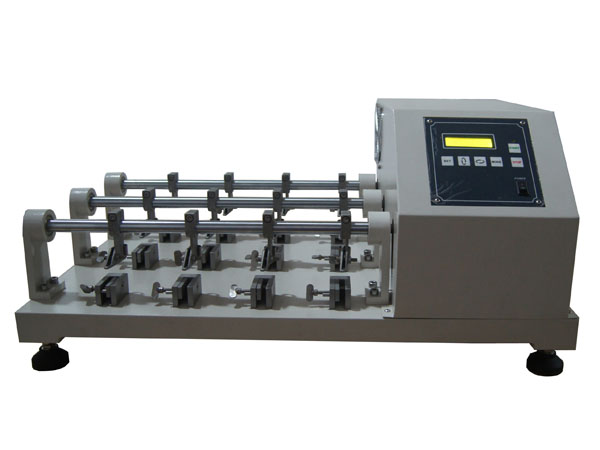Bally Type Flexometer:
How the Bally Type Flexometer Works
The tester operates by subjecting a material specimen to cyclic flexing at a predetermined angle and frequency. Key features include:
- Adjustable Parameters: Flexing angle (typically 180° or 22.5°), speed (up to 100 cycles per minute), and temperature control.
- Specimen Clamping: Materials are secured in a holder, ensuring consistent exposure to stress.
- Measurement: The number of cycles required to initiate cracks or surface damage determines the material’s flexibility rating.
Compliance with standards like ISO 5423, ASTM D6182, and SATRA TM55 ensures globally recognized results. Advanced models integrate digital counters, touchscreen interfaces, and automated shut-off functions for enhanced precision.
Applications Across Industries
- Leather Goods and Footwear: Tests the durability of shoe soles, uppers, and leather accessories to withstand repeated bending during use.
- Rubber and Plastics: Evaluates the crack resistance of seals, hoses, and industrial components under dynamic stress.
- Textiles and Coatings: Assesses the flexibility of coated fabrics, ensuring performance in applications like automotive interiors and protective gear.
- Research and Development: Aids in material selection for innovative products, such as flexible electronics and wearable tech.

Market Significance and Future Trends
As industries prioritize lightweight yet durable materials, the Bally Type Flexometer has become indispensable for optimizing product lifespans and reducing waste. Manufacturers like Gotech Testing Machines and Instron offer cutting-edge models with features like 3D imaging for real-time crack detection and AI-driven predictive analytics to forecast material failure points.
The growing demand for sustainable materials—such as bio-based polymers and recycled textiles—is driving innovations in testing methodologies. Future machines may incorporate IoT connectivity for remote monitoring and cloud-based data sharing, streamlining workflows for global testing labs.
In conclusion, the Bally Type Flexometer is a cornerstone of material science, bridging innovation and practicality. By investing in this technology, businesses not only meet regulatory standards but also gain a competitive edge in an era of heightened quality expectations.

